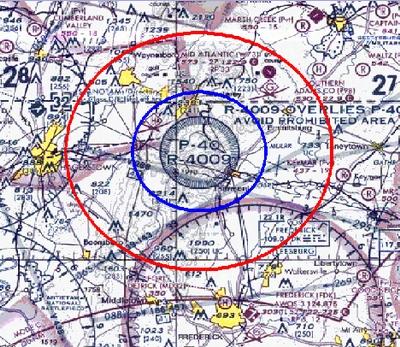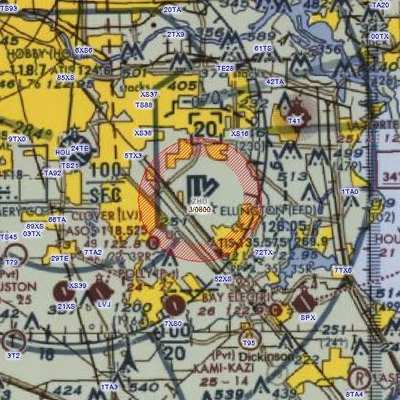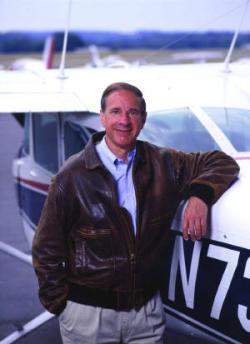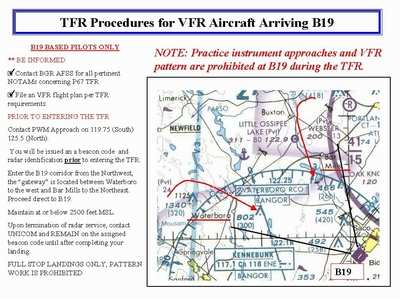Yellow Tape In The Sky
Who's airspace is it anyway? That was one of the biggest
questions among pilots and aviation enthusiasts in 2003, as the
government issued Temporary Flight Restrictions hand-over-fist.
Flights were restricted or prohibited wherever the president
traveled. The vice president was covered by an aerial blanket as
well. In fact, a lot of VIP's traveled in protected bubbles of
airspace in 2003.

But the very nature of the TFRs caused unwitting pilots
headaches and heart palpitations. Take, for instance, the case of
an Ohio pilot checking pipelines when he inadvertently flew right
over President Bush's motorcade in Philadelphia back in July:
When you're flying along, doing your job and suddenly notice an
F-16 and a couple of Black Hawks off your wing, with the pilots
looking at you real hard, that's a bad thing, right? That's just
what happened to an aviator from Underwood Aerial Patrol in
Bloomingburg (OH).
Secret Service: "Wrong Place, Wrong Time"
President Bush was in Philadelphia Thursday to announce the
first distribution of government checks under his Child Credit Act.
Some 25-million families will each receive up to $400 per child
from Uncle Sam. The president was traveling in motorcade along I-95
from the airport to the check processing center when the unnamed
pilot flew right overhead. What the pilot apparently didn't know
was that a Temporary Flight Restriction had been issued, extending
30 miles in all directions from the center of Philadelphia. He flew
along the Delaware River and crossed over the motorcade at
approximately 800 ft. AGL, according to the FAA.

When the pilot didn't respond to ATC, a city police helicopter
was sent to intercept him. A USAF F-16 joined the party and the
pilot was forced to land his Cessna 172 at the Camden County
Airport in Winslow Township (NJ). His aircraft was met by
some 30 local and federal law officers with guns drawn. The pilot
was handcuffed and sat down for a little chat with federal
agents.
 The situation became so
out-of-control that AOPA and its president, Phil Boyer (right),
demanded an end to TFRs on demand. In November, we wrote:
The situation became so
out-of-control that AOPA and its president, Phil Boyer (right),
demanded an end to TFRs on demand. In November, we wrote:
AOPA has asked the FAA to reduce the size of presidential
temporary flight restriction areas. In a letter to FAA
Administrator Marion Blakey, AOPA President Phil Boyer expressed
concern over the proliferation of airspace restrictions impacting
general aviation. He specifically mentioned the new
10-nautical-mile TFR around Camp David in Maryland, which is
effective over the weekend.
"The TFR closes Frederick's (FDK) ILS system to all practice
approaches and student traffic," Boyer told Blakey. "Frederick is
the second busiest airport in the state. It is a magnet for
business aviation and student training, and it is home to a large
soaring club. TFRs like this one impact general aviation flying and
flight training, air charter operations, and airport
businesses."
But the TFR-O-Rama continued. With bitter irony, pilots trying
to get into Kill Devil Hills (NC) to celebrate the Centennial of
Flight found themselves locked out when President Bush arrived to
make a speech.
As the AOPA and EAA continue to battle Washington for an end to
TFRs, technology is at least making it easier to see where the
yellow "Do Not Cross" tape meets the sky. In June, we wrote:
AOPA Convinces FAA To Put Graphical Info On Web
AOPA's two-year-long struggle to have the FAA make official,
valid graphical depictions of temporary flight restrictions (TFRs)
available to pilots will finally bear fruit on Sunday, June 15,
2003. The FAA will launch its graphical TFR Web site, giving pilots
for the first time government-issued information that shows what
airspace is restricted. Ironically, pilots now will have a better
TFR picture than most flight service station briefers because of
equipment limitations.

Of course, that doesn't address the issue of TFR's that come up
when someone is in flight -- and someone is always flying. Both the
EAA and AOPA have offered their expertise to the TSA, which, by its
own admission, is thin on aviation experience.
 1st Annual Affordable Flying Exposition Gets Its Footing
1st Annual Affordable Flying Exposition Gets Its Footing Aero-News: Quote of the Day (11.04.25)
Aero-News: Quote of the Day (11.04.25) Aero-News: Quote of the Day (11.05.25)
Aero-News: Quote of the Day (11.05.25) Airborne 10.30.25: Earhart Search, SpaceX Speed Limit, Welcome Back, Xyla!
Airborne 10.30.25: Earhart Search, SpaceX Speed Limit, Welcome Back, Xyla! ANN's Daily Aero-Linx (11.05.25)
ANN's Daily Aero-Linx (11.05.25)






